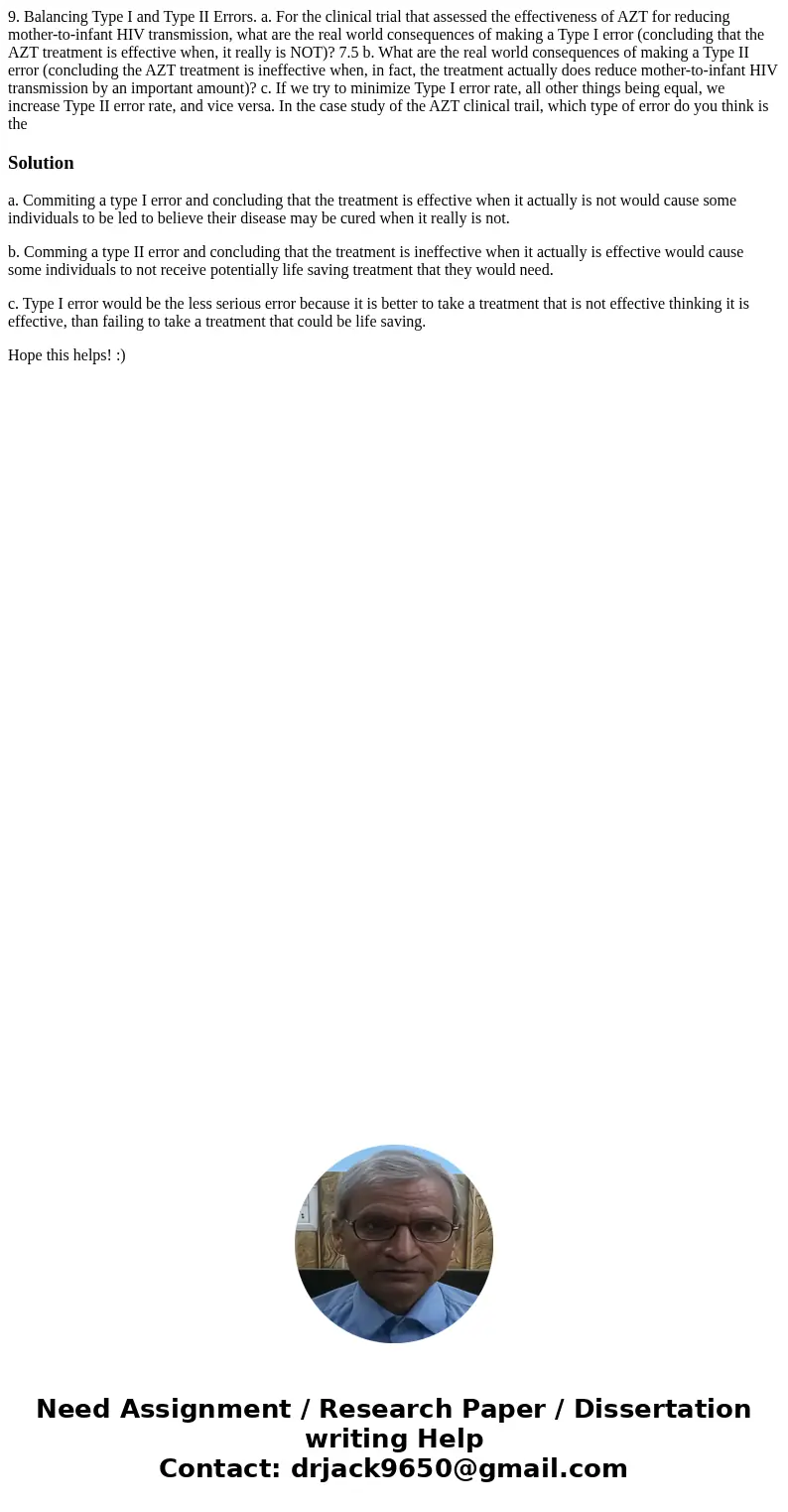9 Balancing Type I and Type II Errors a For the clinical tri
9. Balancing Type I and Type II Errors. a. For the clinical trial that assessed the effectiveness of AZT for reducing mother-to-infant HIV transmission, what are the real world consequences of making a Type I error (concluding that the AZT treatment is effective when, it really is NOT)? 7.5 b. What are the real world consequences of making a Type II error (concluding the AZT treatment is ineffective when, in fact, the treatment actually does reduce mother-to-infant HIV transmission by an important amount)? c. If we try to minimize Type I error rate, all other things being equal, we increase Type II error rate, and vice versa. In the case study of the AZT clinical trail, which type of error do you think is the
Solution
a. Commiting a type I error and concluding that the treatment is effective when it actually is not would cause some individuals to be led to believe their disease may be cured when it really is not.
b. Comming a type II error and concluding that the treatment is ineffective when it actually is effective would cause some individuals to not receive potentially life saving treatment that they would need.
c. Type I error would be the less serious error because it is better to take a treatment that is not effective thinking it is effective, than failing to take a treatment that could be life saving.
Hope this helps! :)

 Homework Sourse
Homework Sourse